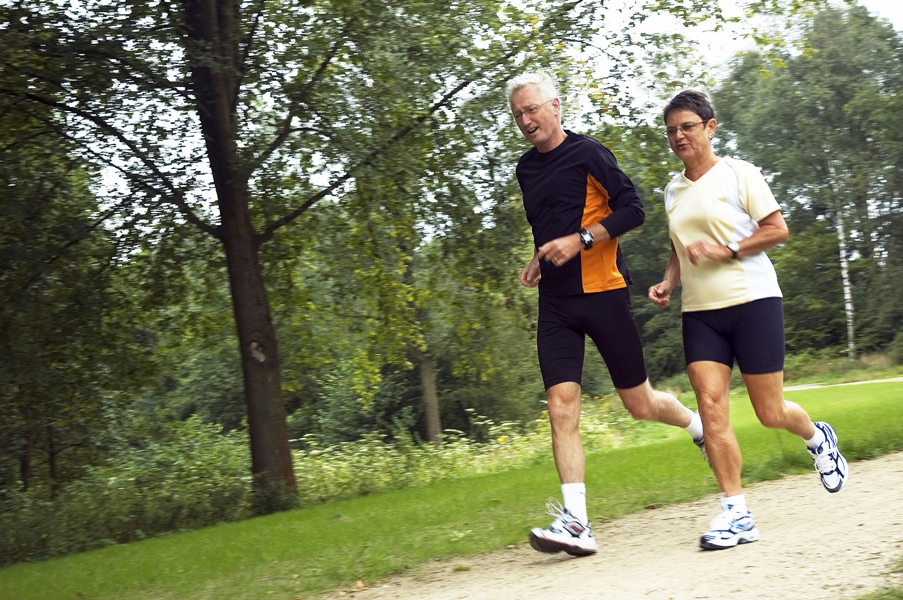Running remains one of the most popular forms of exercise due to its’ affordability, accessibility, and health benefits. The popularity of the sport has grown tremendously over the last few decades, but despite advancements in shoe wear, training methods, and rehabilitation interventions the injury rates remain frustratingly high. Up to 90% of runners will report an injury in the past requiring them to miss training or competition time. The greatest percentage of injuries are classified as overuse in nature and involve the lower extremity.
The hamstring muscles are an essential, but often symptomatic, group of 3 muscles spanning from the pelvis to the knee. These muscles produce the movements associated with bending the knee and bringing the thigh behind our body. When the foot is on the ground these muscles work closely with the gluts and calf muscles to move the body forward over the foot. In a runner, these hamstrings produce the forces necessary for the flight phase of running, as well as, assist in the deceleration of the leg in preparation for heel or foot strike. This important function places the hamstring at risk for both overuse and traumatic injuries.
The hamstrings can be overloaded during run training due to poor running mechanics, training errors, and muscle imbalances. Runners often present with hamstring muscle and tendon pain due to weakness in their glut musculature. The glut muscles are the primary muscles used to produce the flight phase of running. Without the contribution from these powerful muscles runners place increased loads on the hamstrings leading to chronic pain, tightness, and decreased running performance. Often runners focus on soft tissue work and stretching of the hamstring when the true culprit is weakness in glut muscles.
Traumatic hamstring strains during high-speed running activities occur at the end of the swing phase, recovery stride, as the hamstrings contract but also lengthen (eccentric contraction) in preparation for landing. The transition from deceleration to acceleration at push off contributes to the cause of injury. The outer most hamstring muscle, the biceps femoris, is the most injured muscle among the 3. Injured runners often report an immediate onset of pain in the back of the thigh often preceded by a feeling of tightness or cramping. This pain can be associated by warmth, tenderness, swelling, discoloration, and deformity depending on both the severity and location of the injury.
In addition to these complaints, runners often present with losses of flexibility, strength, and walking or running function depending on the grade of injury. The least severe, grade I, strain involves minimal tissue damage due to a slight stretching of the muscle fibers and has the fastest return to sport. With greater degrees of tissue injury, runners experience greater amounts of pain and apparent signs of injury including weakness and pain upon muscle contraction. A grade II or moderate injury involves tearing of the muscle fibers often presenting with discoloration, swelling, and deformity in the muscle. The most severe injury, grade III, involves a complete tear or rupture of the tissue often associated with a loud pop at the time of injury. Thankfully, these injuries are rare and are normally only seen with high speed sprinting and sports activities.
Rehabilitation of these injuries by a licensed Physical Therapist can accelerate the healing process allowing a runner to return to sport in the most safe and effective way possible. Depending on the severity of the tear, mild to moderate tears often return to running in weeks to months. Grade III tears with high degrees of disability and loss of function should be evaluated by an orthopedic surgeon. Physical Therapists are essential clinicians in the management of these injuries who often utilize interventions including joint mobilization and manipulation, dry needling, soft tissue mobilization, and most importantly exercise to quickly reduce symptoms associated with the injury.
In the initial phases of recovery, emphasis is placed on controlling pain and inflammation, as well as, protecting the site of injury through activity modification. Depending on the grade of injury strengthening is initiated first in non-weight bearing (foot off the ground laying on stomach) with progression to weight bearing exercises as tolerated by the injured tissue. Bridging is an excellent example of initially loading the injured tissue prior to moving into standing exercises. Emphasis is placed on matching the strengthening exercise to the injured tissues tolerance for load. Under-loading and over-loading the injured muscle with exercise are equally detrimental to the optimal recovery of the injured muscle. Eccentric strengthening exercises, such as Nordic hamstring curls and deadlifts, are excellent choices to both prepare the injured tissue for the demands of running and prevent the recurrence of future injury.
Unfortunately, many sports including running report a high injury recurrence rate. The elevated recurrence rates are influenced by clinicians and runners focusing on only the symptoms not the underlying causes of their injury. For example, increasing both glut and hamstring strength to normative levels prior to return to sport. Surprisingly, hamstring length, flexibility, and stretching have not been shown to significantly reduce an athlete’s risk of injury. Conversely, strengthening and specifically eccentric or lengthening strengthening has been shown to reduce the risk of hamstring strains among athletes. These exercises specifically train the muscle and the athlete to handle the demands of their sport. Athletes are also encouraged to work with a licensed Physical Therapist or running coach to identify any abnormal mechanics in their running gait, which may have either precipitated or perpetuated their symptoms.
In summary, hamstring injuries are a common problem among recreational runners but injury prevention programs can mitigate the risk of injury. Runners are advised to avoid large increases in running volume(terrain, intensity, duration, frequency) during their training cycles and to incorporate a strength training program to complement their endurance training. Specifically, eccentric strengthening has been shown to have the greatest impact on this injury.

